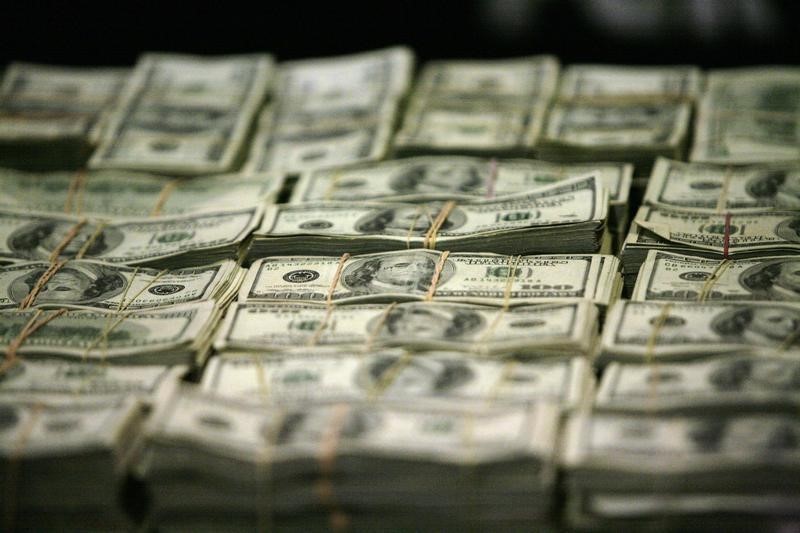Investing.com - The dollar remained broadly lower against a basket of other major currencies on Tuesday, as a renewed selloff in European government bond and stock markets continued to weigh on the greenback and as trading volumes were thin with no major U.S. data to be released.
The euro was higher, with EUR/USD advancing 0.77% to 1.1240.
The single currency was boosted as a fresh selloff in global bond markets undermined greenback strength. German 10-year bund yields jumped, narrowing the gap with their U.S. counterparts.
German bund yields act as benchmarks for European financial markets and higher yields push the euro higher against the dollar. Yields rise as prices fall.
Earlier Tuesday, Greece repaid a €770 million loan installment to the International Monetary Fund, easing concerns that it was on the verge of default although fears over the country’s future in the euro area persisted.
Athens is scrambling to reach an agreement with its international creditors on a package of economic reforms in order to access fresh bailout funds and avert a liquidity crunch.
GBP/USD rose 0.38% to 1.5647, near five-month highs of 1.5711 hit earlier in the session.
The Office for National Statistics said U.K. industrial output rose 0.5% in March, the strongest increase since September and ahead of economists' forecast for an unchanged reading after a 0.1% rise in February.
Manufacturing production rose 0.4% in the U.K. after upwardly revised growth of 0.5% in February, slightly ahead of forecasts for a 0.3% increase. On a year-over-year basis, manufacturing output was just 1.1% higher, the slowest rate of growth since December 2013.
Elsewhere, the dollar was steady against the yen, with USD/JPY at 120.03 and lower against the Swiss franc, with USD/CHF down 0.83% to 0.9264.
The Australian and New Zealand dollars were stronger, with AUD/NZD up 0.94% to 0.7965 and NZD/USD gaining 0.22% to 0.7350.
Earlier Tuesday, the Australian Bureau of Statistics reported that home loans increased by 1.6% in March, exceeding expectations for a 1.0% rise. The change in home loans for February was revised to a 1.1% gain from a previously estimated 1.2% increase.
Meanwhile, USD/CAD declined 0.70% to trade at 1.2017.
The U.S. dollar index, which measures the greenback’s strength against a trade-weighted basket of six major currencies, was down 0.66% to 94.48, not far last week's two-month trough of 93.96.
